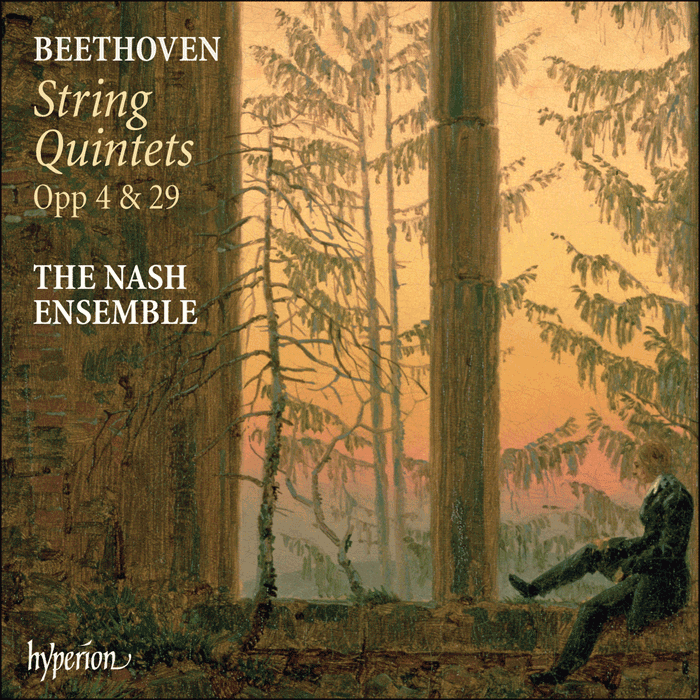Beethoven: String Quintets Op 4 & 29
The Nash Ensemble
CDA67693
Britain’s most versatile chamber ensemble turns its attention to two works from seminal moments in Beethoven’s career.
Beethoven’s String Quintet in E flat major Op 4 is a radical rethinking and expansion of an Octet for pairs of wind instruments which was written in Vienna in 1793 where there was an insatiable demand for jolly alfresco wind band music. In 1795 Beethoven transformed the work by setting it for strings, making it suaver and more sophisticated. Throughout the Quintet, and especially in the first movement, the textures are at once lighter and more flexible than those of the Octet, full of the free, informal contrapuntal interplay that is among the glories of the Viennese classical style.
With Beethoven’s String Quintet in C major Op 29, his sole work conceived for the medium, we move to 1801 and the final phase of his so-called ‘first period’. This strangely neglected masterpiece is Janus-headed, at once retrospective and prophetic. He never wrote a more voluptuously Mozartian slow movement than the Adagio molto espressivo. On the other hand, the tranquil expansiveness and harmonic breadth of the quintet’s first movement prefigure masterpieces like the first ‘Razumovsky’ String Quartet, Op 59 No 1, and the ‘Archduke’ Piano Trio.

